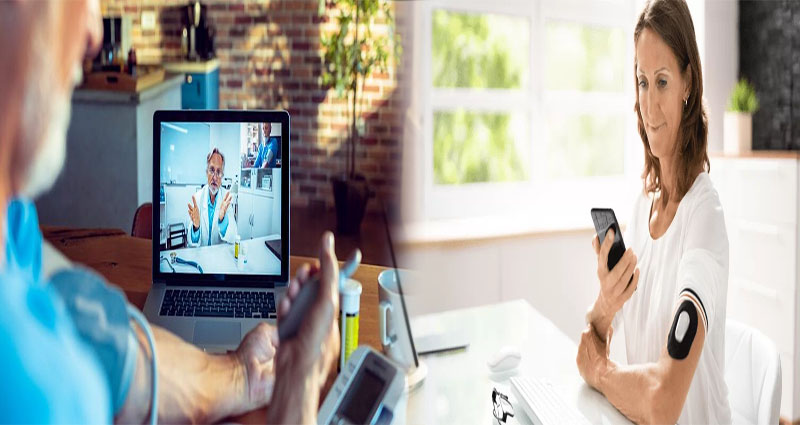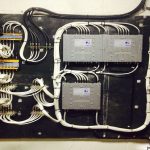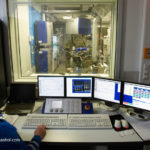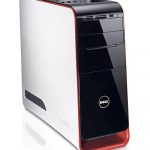Healthcare technology has come a long way in recent years, with advancements in digital solutions that enable remote care delivery. Two of the most notable solutions are telemedicine and remote patient monitoring. These digital tools are transforming the healthcare industry, enabling medical providers to offer more personalized and efficient care delivery. In this article, we discuss the benefits of telemedicine and remote patient monitoring and explore how these technological advancements are improving healthcare.
Understanding Telemedicine and Remote Patient Monitoring
Telemedicine refers to the provision of healthcare services remotely, using technology such as video conferencing, instant messaging, and digital platforms. Telemedicine technology enables healthcare providers to offer long-distance clinical services, healthcare education, and health information, all without requiring an in-person visit.
Remote patient monitoring is a form of telemedicine that uses technology to collect patient data from a remote location. Devices such as wearables, heart monitors, and blood sugar monitors can track patient data and send it to healthcare providers in real-time. This technology allows medical professionals to monitor patients’ vital signs and identify any potential health issues before they escalate.
Advancements in Healthcare Technology
Telemedicine and remote patient monitoring have been around for decades, but recent advancements in healthcare technology have enabled these solutions to become more efficient and widely accessible. Here are some of the significant advancements in telemedicine and remote patient monitoring technology:
1. Artificial Intelligence (AI)
AI has enabled telemedicine and remote patient monitoring to evolve, providing more in-depth data analytics that lead to better patient outcomes. AI-powered virtual assistants and chatbots provide patients with instant access to medical information, allowing for faster diagnosis and treatment.
2. Wearable Technology
Modern wearable technology, such as fitness trackers and smartwatches, has enormous potential in remote healthcare delivery. Health monitoring devices can track patient data such as heart rate, blood pressure, and sleep patterns. This data can then be transmitted to healthcare professionals for analysis, providing a more comprehensive picture of the patient’s overall health.
3. Connected Devices
Connected devices, such as Bluetooth-enabled thermometers and blood pressure monitors, enable healthcare providers to monitor patients’ vital signs remotely in real-time. These devices can transmit patient data automatically, providing healthcare professionals with a more accurate picture of the patient’s health status.
4. Cloud-based Solutions
Cloud-based healthcare solutions enable healthcare providers to access patient data from anywhere, at any time. This technology allows medical professionals to store and share patient information securely, streamlining patient care delivery and communication between different healthcare providers.
Benefits of Telemedicine and Remote Patient Monitoring
Telemedicine and remote patient monitoring offer numerous benefits to patients and healthcare providers. Here are some of the significant advantages of using these technologies in healthcare:
1. Increased Patient Access to Care
Telemedicine and remote patient monitoring allow patients to access medical care more easily and without the need for in-person visits. Patients can receive timely care regardless of their location, improving patient outcomes and reducing healthcare costs.
2. Improved Patient Engagement
Telemedicine and remote patient monitoring empower patients to take an active role in their healthcare. Patients can monitor their own health status and communicate with healthcare providers, leading to a more personalized care experience.
3. Better Care Coordination
These technologies enable healthcare providers to share patient data, leading to better care coordination and improved patient outcomes. Providers can collaborate quickly, enhancing the quality of care delivered to patients.
4. Reduced Healthcare Costs
Telemedicine and remote patient monitoring can reduce healthcare costs by reducing the need for in-person visits, decreasing emergency hospital admissions, and improving patient outcomes, reducing the need for more expensive care.
Telemedicine and remote patient monitoring represent significant advancements in healthcare technology. These technological solutions provide patients with increased access to healthcare, allowing medical professionals to monitor their health status more easily and deliver more personalized care. By enabling healthcare providers to collaborate more efficiently and improve productivity, telemedicine and remote patient monitoring are transforming the healthcare industry. As technology continues to advance, these digital solutions will enhance the quality and accessibility of healthcare, making it more efficient and patient-centered.












